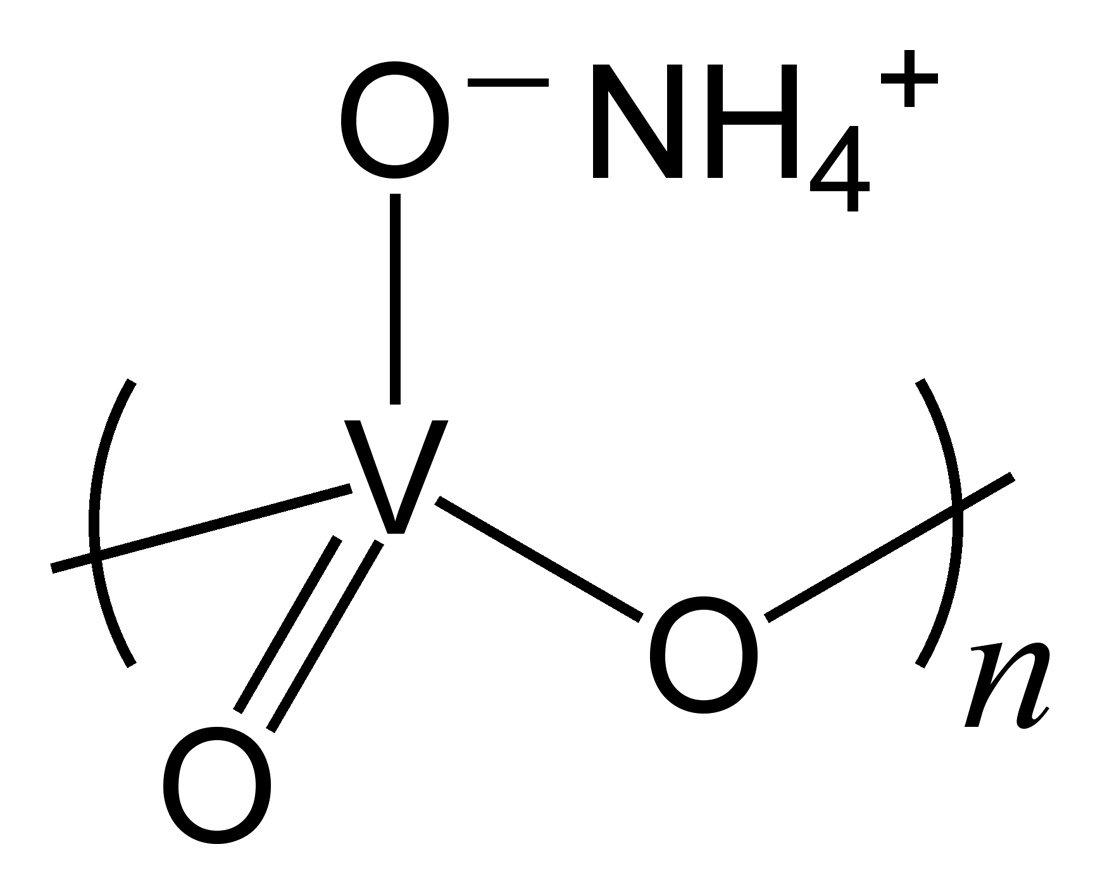Are you familiar with Ammonium Metavanadate? If not, you should know that it’s in dozens of products you’re probably already using. This white crystalline powder has a few interesting properties; let’s take a look.
The Properties of Ammonium Metavanadate
The molecular formula of Ammonium Metavanadate is H4NO3V. It’s slightly denser than water, and soluble in water, too, although the warmer the water the better. Although the material doesn’t decompose until over 400 degrees F., it releases moderately toxic ammonia fumes once it does, so care should be used when handling. When it’s stored correctly, the substance is relatively stable.
Although pure Ammonium Metavanadate is white in color, impurities can cause it to become yellowed. Industrially, the compound is used most frequently as a drier in paints, dyes, and inks. Recently, however, Ammonium Metavanadate has been increasingly used as a reagent, due in large part to its predictable catalytic properties.
Ammonium Metavanadate as a Catalyst and Reagent
As it turns out, Ammonium Metavanadate is a cost-effective (yet mild) catalyst for the synthesis of α-hydroxyphosphonate derivatives at room temperature. For coumarins, precursors for the synthesis of a wide variety of medicinal agents, the use of Ammonium Metavanadate as a reagent is proving both inexpensive and high-yield. Traditional catalysts such as cellulose sulphuric acid and sulfated Zirconia are neither user-friendly or low-cost. Researchers are continually exploring additional benefits of Ammonium Metavanadate as a catalyst including its mild reaction conditions (i.e. room temperature requirements), operational simplicity, and higher yields.
Much study is still underway of Ammonium Metavanadate’s use as a substitute for traditional catalysts such as ethanol. Because of its slight toxicity, tests must be carried out under extremely controlled conditions, and it’s imperative that the Ammonium Metavanadate used is high-purity.
Noah Chemicals is regularly asked to consult on research projects for use of new or substitute reagent chemicals. We’re excited to see developments in both the medical and commercial uses for Ammonium Metavanadate. How can we help your project move forward?




